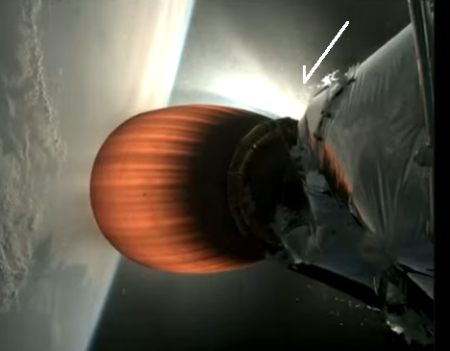Martian taffy terrain
Cool image time! The picture to the right, rotated, cropped, reduced, and enhanced to post here, was taken on April 11, 2024 by the high resolution camera on Mars Reconnaissance Orbiter (MRO). It shows a typical area of what scientists have labeled “taffy terrain,” a landscape made up of strangely twisted bands that look like someone was pulling the ground repeatedly, just like taffy.
Based on the lower crater count found here, taffy terrain is thought to be relative young, formed around three billion years ago. While the exact formation process is not yet understood, scientists theorize that it was caused by some type of “viscous fluid” that settled into localized depressions.
The location is 40 degrees south latitude, so it is entirely possible we are seeing some form of glacial material, ice in these low spots that has no place to go but is warped over time by the same kind of tidal and rotational planetary effects that cause waves and tides in the oceans on Earth.
» Read more
Cool image time! The picture to the right, rotated, cropped, reduced, and enhanced to post here, was taken on April 11, 2024 by the high resolution camera on Mars Reconnaissance Orbiter (MRO). It shows a typical area of what scientists have labeled “taffy terrain,” a landscape made up of strangely twisted bands that look like someone was pulling the ground repeatedly, just like taffy.
Based on the lower crater count found here, taffy terrain is thought to be relative young, formed around three billion years ago. While the exact formation process is not yet understood, scientists theorize that it was caused by some type of “viscous fluid” that settled into localized depressions.
The location is 40 degrees south latitude, so it is entirely possible we are seeing some form of glacial material, ice in these low spots that has no place to go but is warped over time by the same kind of tidal and rotational planetary effects that cause waves and tides in the oceans on Earth.
» Read more














